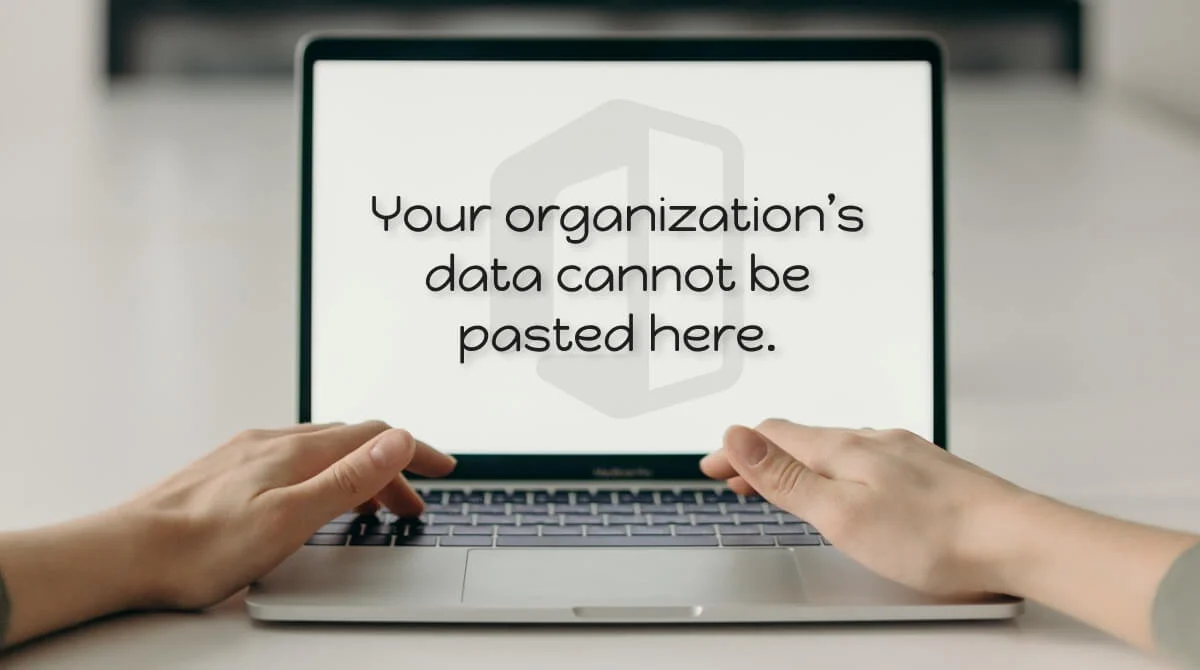In today’s digital landscape, data is the lifeblood of every organization. It drives decision-making, informs strategies, and fuels innovation. But what happens when that vital information cannot be shared as easily as we’d like? The phrase “your organization’s data cannot be pasted here” serves as a stark reminder of the complexities surrounding data sharing in an age where security breaches are all too common.
As we navigate this intricate web of connectivity, it’s crucial to recognize the risks associated with copy-pasting sensitive information. Many organizations fall into the trap of convenience over caution, often overlooking how simple actions can lead to major vulnerabilities. So, how do we safeguard our critical assets while maintaining efficiency?
Join us as we explore why having a robust data management system is essential for every organization, along with practical tips for securely sharing your valuable information within your team. Let’s dive into alternatives that enhance both productivity and security without compromising on trustworthiness!
Understanding the your organization’s data cannot be pasted here.
Understanding the phrase “your organization’s data cannot be pasted here” is crucial in today’s information-driven world. It highlights a growing concern about data security and privacy.
This warning often appears when attempting to copy sensitive content from protected environments. It serves as an important protective measure against unauthorized sharing or accidental leaks of confidential information.
Organizations are increasingly adopting strict policies around data handling to mitigate risks. This includes implementing software that restricts copying, pasting, or exporting sensitive documents.
Recognizing this limitation can remind employees of their responsibility in safeguarding proprietary knowledge. Awareness fosters a culture of caution and respect for organizational assets.
Understanding these constraints shapes how teams interact with information daily while prioritizing security over convenience.
The Risks of Copy and Pasting Data
Copying and pasting data may seem harmless, but it comes with hidden dangers. One major risk is the unintentional sharing of sensitive information. When data is copied without verification, it might include confidential details that can lead to breaches.
Additionally, copying from unreliable sources can introduce errors or outdated information into your workflow. This not only affects project quality but also erodes trust among team members who depend on accurate data.
There’s also the potential for malware exposure. If you copy and paste content from compromised sites, you could inadvertently introduce harmful code into your organization’s systems.
Relying too heavily on copying and pasting can create a culture of negligence regarding proper data management practices. It encourages shortcuts rather than promoting thorough analysis or careful consideration of how information is handled within an organization.
Why Organizations Should Have a Data Management System
Every organization generates vast amounts of data daily. Managing this information effectively is crucial for informed decision-making.
A robust data management system helps streamline operations. It ensures that relevant data is easily accessible to those who need it, reducing time spent searching and increasing productivity.
Moreover, a well-structured system enhances data quality. This minimization of errors leads to more accurate analyses and insights, driving better business strategies.
Compliance with regulations also becomes simpler with a dedicated approach to data management. Organizations can avoid hefty fines by adhering to legal requirements regarding personal or sensitive information.
Fostering a culture of accountability around data handling builds trust among employees and clients alike. In today’s digital landscape, organizations cannot afford the risks associated with poor data management practices; investing in an effective system strengthens overall organizational resilience.
Tips for Securely Sharing Data Within an Organization
Securely sharing data within an organization requires a strategic approach. Start by implementing access controls to ensure that only authorized personnel can view or modify sensitive information. This reduces the risk of data leaks.
Next, use encrypted communication channels for transmitting data. Whether it’s email, file transfers, or messaging apps, encryption adds a layer of security that protects against interception.
Regular training is also essential. Educate employees on safe practices when handling data and the importance of recognizing phishing attempts. Awareness can significantly reduce human error.
Additionally, consider utilizing secure cloud storage solutions. These platforms often come with built-in security features such as automatic backups and multi-factor authentication.
Establish clear protocols for sharing confidential information both internally and externally. Consistency in processes helps mitigate risks associated with accidental exposure or unauthorized access to your organization’s data cannot be pasted here.
Alternatives to Copy and Pasting Data
Instead of relying on copy and paste, consider using data integration tools. These applications can seamlessly connect various data sources, ensuring that information flows effortlessly across platforms.
Another option is to utilize APIs (Application Programming Interfaces). They allow different software systems to communicate with one another securely. This method keeps your organization’s data intact while enabling quick access.
Collaboration platforms like Google Drive or Microsoft SharePoint also provide a secure environment for sharing documents without copying and pasting sensitive content. Teams can work together in real time, which enhances efficiency.
Employing database management systems allows organizations to store and retrieve data more effectively. This approach minimizes the risk of losing inty during manual transfers.
Adopting these alternatives not only improves workflow but also safeguards valuable organizational information from potential breaches.
Implementing Data Security Measures in Your Organization
Implementing data security measures is crucial for safeguarding your organization’s sensitive information. Start by assessing current vulnerabilities. Identify where your data resides and who has access.
Next, develop a comprehensive policy that outlines clear guidelines for data handling. This ensures everyone understands their role in maintaining security.
Regular training sessions can empower employees to recognize potential threats, such as phishing attempts or social engineering tactics. A well-informed team acts as the first line of defense.
Investing in encryption technologies adds another layer of protection. Encrypting sensitive files ensures that even if they are intercepted, unauthorized users cannot interpret them without proper keys.
Establish regular audits to monitor compliance and evaluate the effectiveness of implemented measures. Continuous improvement is key to staying ahead of evolving threats while keeping your organization’s data secure at all times.
Conclusion: Protect Your Organization’s Data at All Costs
Data protection is not just a best practice; it’s an absolute necessity for any organization. The phrase “your organization’s data cannot be pasted here” serves as a reminder of the vulnerabilities that exist when sensitive information is mishandled.
Prioritizing data security can save your organization from potential threats, including breaches and unauthorized access. By implementing robust data management systems and promoting secure sharing practices, you cultivate an environment where sensitive information remains safe.
Take proactive steps to train your team on secure methods of handling data. Regularly review and update security protocols to keep pace with evolving risks. Remember, safeguarding your organization’s data should always be at the forefront of your operational strategy. Protecting this valuable asset will pay dividends in trust, reputation, and business continuity.

















